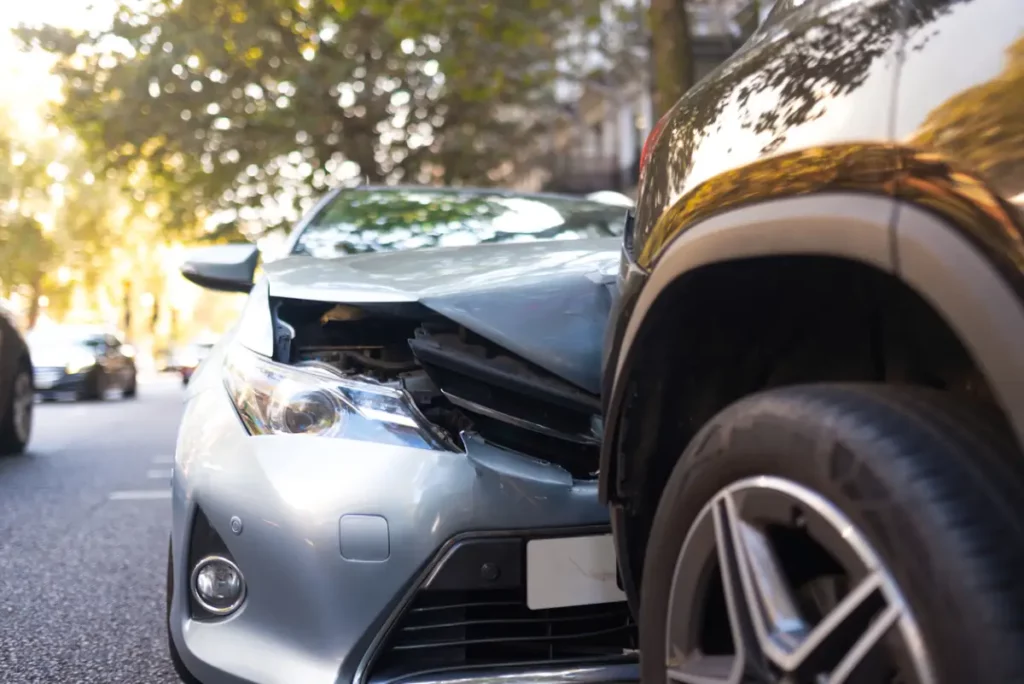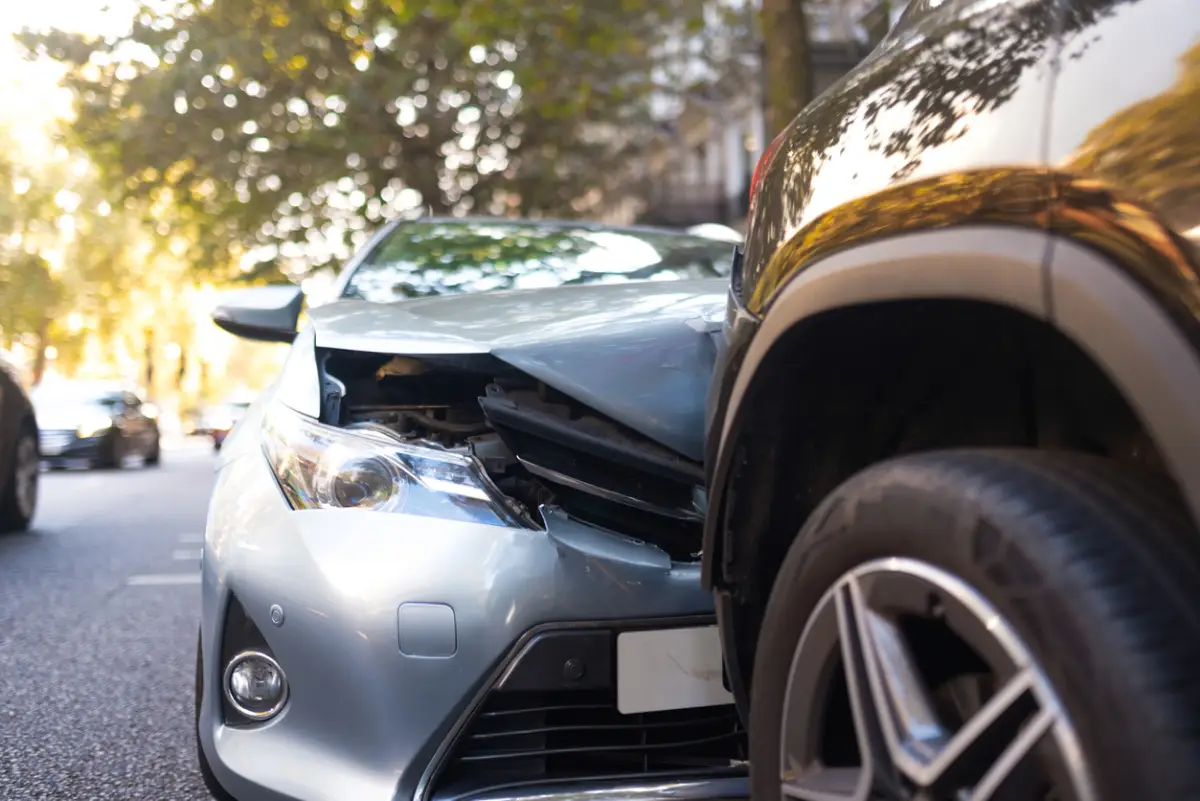
Car accidents are stressful and often disorienting experiences. Whether it’s a minor fender bender or a serious collision, knowing what to do after a car accident step by step can make all the difference. In California, navigating insurance laws, reporting requirements, and settlement processes can be confusing without a clear roadmap. This essential guide walks you through each step with actionable advice, empowering you to protect your rights and make informed decisions.
If you’ve been injured in a car crash, visiting a trusted resource like Delfino Green & Green’s San Francisco car accident page or their broader personal injury legal support hub can be an excellent first step toward recovery and justice.
What to Do Immediately After a Crash: A Quick Checklist
Here’s a concise car accident checklist for San Francisco and all California drivers:
- ✅ Ensure safety and check for injuries
- ✅ Move to a safe location and alert others
- ✅ Call 911 if needed
- ✅ Exchange and document information
- ✅ Photograph the scene and damage
- ✅ Speak to the police and get a report
- ✅ Notify your insurance provider
- ✅ Start the repair and claims process
- ✅ Contact an attorney if needed
Understanding California Car Accident Laws
California operates under a fault-based insurance system, meaning the at-fault driver’s insurance typically pays for the damages. The California Department of Insurance outlines specific responsibilities for drivers involved in accidents, including reporting, liability coverage, and consumer protections.
The California Insurance Code governs how insurance companies handle claims, outlines consumer rights, and regulates the process for selecting a repair shop after an accident. By understanding these basics, you’re better equipped to navigate the post-accident process.
Additionally, California law requires drivers to demonstrate financial responsibility for damages caused by motor vehicles, including meeting the minimum liability requirements set by the state.
Step 1: Ensuring Safety at the Accident Scene
Your first priority should always be safety.
Immediately after the crash, take swift and deliberate action to secure your safety and that of others:
- Move your cars out of traffic to a safe area such as the shoulder, a nearby side street, or a parking lot, if possible. If the cars cannot be moved, turn on your hazard lights and remain inside until help arrives.
- Turn off the engine to reduce the risk of fire or further mechanical issues.
- Engage the parking brake to ensure the vehicle remains stationary, especially on inclines.
- Check yourself and other passengers for any injuries. If you suspect neck, back, or head trauma, avoid moving the person unless there’s immediate danger.
- Call 911 immediately to report the accident and request emergency personnel if anyone is injured or if there are hazards—even seemingly minor injuries can worsen over time.
- Assess the surrounding scene for hazards: Stay alert for leaking fluids, broken glass, flames, or passing traffic that may not see the stopped vehicles.
- Set up safety markers such as cones or warning triangles, if available, to alert oncoming drivers.
Pro Tip: Never stand between vehicles, in traffic lanes, or on the road shoulder during inspection—remain as far from moving traffic as possible to avoid secondary accidents.
Step 2: Gathering Information
Collecting accurate and thorough details at the accident scene is essential not only for filing insurance claims but also for protecting your legal rights and strengthening your case if liability is disputed later.
- Exchange critical information with all involved drivers:
- Full legal names (verify with ID if possible)
- Contact details (cell phone numbers and email addresses)
- Driver’s license numbers and issuing state
- Insurance provider names and active policy numbers
- Vehicle information: make, model, color, year, and license plate number
- Take detailed and contextual photos:
- Multiple angles of each vehicle involved (close-up and wide shots)
- The entire accident scene, including road layout, skid marks, damaged guardrails, debris, traffic signs, and any traffic lights
- Weather and lighting conditions at the time of the crash
- Any visible injuries to yourself or others (only with their consent)
- Interior damage, airbag deployment, or broken glass inside vehicles
- Document witness information and statements:
- Full names and best contact numbers
- Email addresses
- A summary of what they saw (record audio or write notes if they agree)
- Sketch the scene:
- Create a rough diagram of the accident, showing vehicle positions before and after the collision
- Indicate traffic directions, lane markings, and traffic signals or signs
Tip: Store everything securely—use your smartphone’s notes app or a dedicated accident documentation app. Consider backing up photos and notes to cloud storage immediately in case your device is lost or damaged.
Step 3: Involving the Police
Even if the accident seems minor, involving the police can be essential to protect yourself legally and ensure proper documentation.
- Call law enforcement immediately to report the incident. If you’re unsure whether the accident qualifies, it’s better to call and let them decide.
- Cooperate fully but stick to factual details—avoid speculation or admitting fault.
- Request the responding officer’s full name, badge number, and contact details. This will make it easier to follow up.
- Ask for the incident report number and find out how and when you can obtain a full copy of the police report. This report often becomes a vital piece of evidence in insurance claims or potential legal disputes.
In California, filing a police report is particularly important when:
- There are any injuries or fatalities, no matter how minor they may seem
- Estimated property damage exceeds $1,000 (a common threshold for mandatory reporting)
- The other driver appears intoxicated, unlicensed, uninsured, or attempts to flee the scene
- There is a disagreement between the parties about who is at fault
Pro Tip: If officers are unavailable or decline to come due to resource limits (especially in minor accidents), you may still file a report at a local police station or online, depending on the jurisdiction. Make sure to note the time you called and whom you spoke with.
Step 4: Notifying Your Insurance Company
Report the accident to your insurance provider promptly, ideally within 24 to 48 hours.
Timely notification is not only required by most insurance policies but also crucial to preserving your right to file a claim. Delays could be used against you during settlement negotiations.
- Provide comprehensive documentation:
- A copy of the official police report
- High-resolution photos showing all vehicle damage and accident context
- Any medical reports or bills if you sought treatment
- Witness statements and their contact details
- A written summary of your account of the incident
- Understand your policy coverage and claims procedures:
- Review your insurance policy to understand exactly what is covered and the specific coverages included, such as vehicle damage, rental reimbursement, and aftermarket equipment.
- Confirm what’s covered, including property damage, medical payments, rental car reimbursement, and towing services
- Clarify your deductible and how it will affect your out-of-pocket expenses. Most policies outline coverage limits, exclusions, and claim procedures, so be sure to check these details.
- Ask about timelines: When will an adjuster inspect your vehicle? How soon can you expect compensation?
- Determine whether you must use a preferred repair shop or have the option to choose your own
- Communicate carefully:
- Be truthful and detailed without speculating or admitting fault
- Provide only the facts of the incident as you understand them
- When exchanging information or filing a claim, be prepared to provide your policy number to verify your insurance policy and coverage.
- Keep a record of all communication with your insurance representative, including names, dates, and summaries of each interaction
Pro Tip: Ask your insurer for a claim reference number and follow up regularly to monitor the status of your claim. If communication stalls or the claim process becomes difficult, it may be time to consult a personal injury attorney.
Step 5: Documenting Vehicle Damage
Accurate and thorough documentation of vehicle damage is essential for supporting your insurance claim and increasing the likelihood of receiving fair compensation. It also helps protect you in the event of disputes regarding fault or the extent of damage.
- Photograph every angle of the vehicle:
- Capture wide shots of all sides (front, back, both sides) from different distances
- Take close-ups of specific damages like scratches, dents, crumpled metal, shattered lights, or paint transfer
- Include interior damage such as deployed airbags, cracked dashboards, or broken seatbelt components
- Photograph any damage to personal belongings that were in the car at the time of the accident
- Record environmental context:
- Document the surrounding area to provide visual proof of location, road conditions, skid marks, and debris
- Include weather conditions (wet roads, poor visibility) and time of day (e.g., glare from the setting sun)
- Track repair and recovery costs:
- Obtain written repair estimates from at least two trusted auto body shops
- Repair costs are determined by both the insurance company and repair shops, based on the extent of damage, parts, and labor required.
- Retain all repair-related invoices, receipts, and payment records
- Log expenses for towing, temporary transportation, or rental vehicles, even if initially out of pocket
- Include timestamps and geolocation data:
- Enable location tagging and automatic timestamps on your phone or camera for all photos
- This can help verify the timing and location of the damage if it’s questioned later
- Maintain an organized file:
- Compile all visual evidence, receipts, and notes in a digital folder or secure cloud storage
- Consider backing up to an external hard drive or USB drive in case of device failure
When a vehicle is declared a total loss, the salvage value is determined by assessing the vehicle’s condition and current market value after the damage.
Tip: If safe to do so, take a short video walkthrough of the vehicle and accident scene for an added layer of visual context.
Step 6: Interacting with Other Parties
- When speaking with the other driver:
- Remain calm and courteous
- Do not assign or accept blame
- Exchange information politely
- If they become aggressive or uncooperative:
- Avoid confrontation
- Stay inside your vehicle if you feel threatened
- Call the police and wait for them to mediate
- If the other party does not speak English:
- Use a translation app or find a bilingual witness
- Do not sign anything you don’t understand
- In the case of a hit-and-run:
- Try to memorize or write down the license plate, vehicle make/model, and color
- Look for surveillance cameras or nearby witnesses
- Report the incident to the police immediately
Remember: Everything you say can be used later in legal or insurance processes. Stay professional and avoid any emotional or speculative statements.
Step 7: Understanding the Repair Process
Navigating repairs can be tricky, especially when dealing with insurers.
- Get a repair estimate from a reputable body shop
- Confirm the shop is approved by your insurer
- Compare multiple estimates if possible
- Review the itemized costs of parts and labor
- Track expenses carefully and save all documentation
To get your vehicle repaired after an accident, you will need to coordinate with your insurer, select a repair shop, approve the repair costs, and follow up on the repair timeline until the work is complete.
Your insurer may offer a list of preferred shops, but you’re not legally required to use them. You can choose any licensed repair facility.
Insurance Requirements in California
All California drivers must carry minimum insurance coverage:
- $15,000 for injury/death to one person
- $30,000 for injury/death to multiple people
- $5,000 for property damage
Additional coverage options include:
- Uninsured/underinsured motorist coverage
- Comprehensive insurance (for non-collision incidents like theft or weather damage)
- Collision insurance (for your own vehicle’s damage)
Tip: Keep proof of insurance in your vehicle at all times.
How to Report a Car Accident in California
In addition to contacting local law enforcement and your insurance provider, California drivers must fulfill two key legal obligations when reporting accidents:
- Report the accident to the California DMV within 10 days using Form SR-1 if it involves injury, death, or property damage exceeding $1,000. This applies regardless of fault or whether law enforcement responds to the scene. If the accident involves other property, such as an unoccupied vehicle or stationary object, you must also report the incident and leave your contact information as required by law.
- Notify your insurance company as soon as possible, ideally within 24 to 72 hours, to initiate the claims process and avoid policy violations.
Failure to submit Form SR-1 in qualifying situations can result in license suspension or other DMV penalties, even if the accident was minor or not your fault. Form SR-1 is available on the DMV website and can be submitted online or by mail.
When to Contact a Personal Injury Attorney
Sometimes, navigating claims on your own isn’t enough. Legal help is crucial if:
- You’re seriously injured
- The fault is disputed
- Your settlement offer is too low
- The at-fault party is uninsured
Delfino Green & Green offers skilled legal guidance tailored to your unique situation, helping you understand your rights and seek the compensation you deserve.
Conclusion: Be Prepared Before It Happens
Accidents happen without warning, but preparation can prevent panic. Knowing what to do after a car accident step by step equips you to protect yourself, your passengers, and your legal rights. From gathering information and contacting authorities to navigating claims and seeking legal counsel, every action matters.
Use this guide to stay informed and empowered. And remember: whether you need a local guide for what to do after a crash or a trusted legal partner, the team at Delfino Green & Green is ready to support you every step of the way.
Need Help After a Car Accident? Visit Delfino Green & Green’s Car Accident Legal Support Page for experienced legal representation in San Francisco and beyond.



